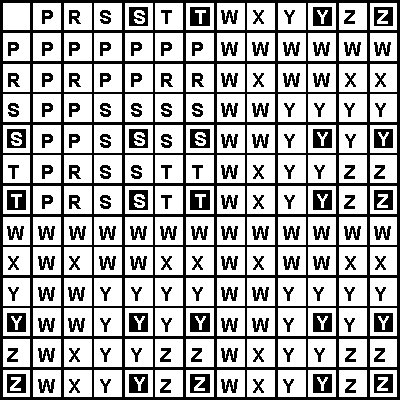 Stamp Duties Act, 1968 (Act 77 of 1968)
Stamp Duties Act, 1968 (Act 77 of 1968)
R 385
Hazardous Substances Act, 1973 (Act No. 15 of 1973)RegulationsRegulations Governing the Conveyance of Hazardous Substances by Road TankerAnnexuresAnnexure 2 : Multi-load Emergency Action Code |
Regulations 1(1) and 5
Multi-Load Emergency Action Code
| 1) | The multi-load emergency action code shall consist of— |
| a) | a number from "1" to "4"; followed by |
| b) | a letter; followed, in certain cases, by |
| c) | the letter "E". |
| 2) | For the purposes of paragraph 3 below any of the letters "S", "T", "Y" and "Z" when shown in column 3 of Part I or Part II of Annexure 1 as a black letter on a white background shall be treated as a different letter when shown in that column as a white letter on a black background. |
| 3) |
| 1) | The number of the multi-load emergency action code is the highest number of any occurring in the emergency action codes for each individual prescribed hazardous substance shown in column 3 of Part I or Part II of Annexure 1. |
| 2) | To determine the first letter of the multi-load emergency action code, take the first letter of the emergency action code for each individual substance and apply the following: |
| a) | If it is the same letter in each case then that letter is the first letter of the multi-load emergency action code. |
| b) | If then are two different letters then take one of the letters and select the vertical column in the code chart in subparagraph (3) below, which is headed (on the top horizontal line) by that letter, then take the other letter and select the horizontal line of letters which has that letter in the left hand vertical column, then the letter in the square where the first mentioned vertical column and that horizontal line meet (''the resultant letter'') is the first letter of the multi-load action code. |
| c) | If then are three different letters then take any two of them and proceed as in paragraph (b) above, then take the resultant letter and do the same again using the resultant letter and the letter for the third substance; the letter in the square where the vertical column headed (on the top horizontal line) by the resultant letter and the horizontal line of letters which has the letter for the third substance in its left hand vertical column meet will be the first letter of the multi-load action code. |
| d) | If then are more than three different letters proceed as above taking the resultant letter each time with one of the other letters until all the other letters have been used; the letter in the square when the last other letter is used will be the first letter of the multi-load action code. |
| 3) | The code chart is— |

| 4) | Nothing in Annexure 2 shall be construed as authorising the carrying of any two substances in one load if it would create a danger to mix them. |
| 5) | The letter "E" shall be included as the Last letter of the multi-load action code if it occurs in the emergency action codes of any one of the substances in the multi-load. |
| 4) | When the multi-load consists of the substances specified in subparagraph (a) of column 1 below or two or mom of the substances specified in subparagraph (b) of that column then the load may be treated as if it were a single load with the substance identification number and emergency action code shown opposite in columns 2 and 3 respectively. |
|
Substances which may be carried using the substance identification number and emergency action code shown in columns 2 and 3 |
Substance identification number |
Emergency action code |
|
a) 1300 Turpentine substitute (White spirit) 1268 Petroleum distillates, N.O.S., with a Benzene content of less than 5% |
1268 |
3..Y.E > |
|
b) 1232 Gas Oil |
|
|
|
1203 Petrol |
1270 |
3..Y.E |
|
1223 Kerosene |
|
|
|
1270 Petroleum fuel N.O.S. |
|